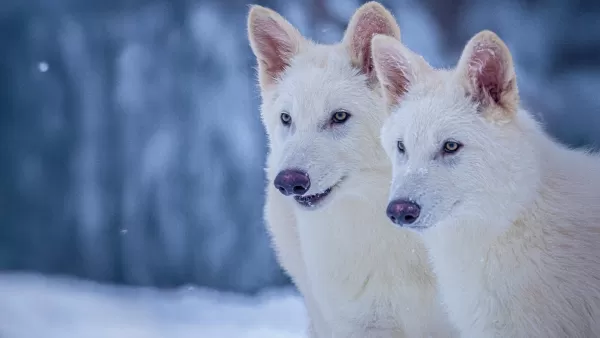Reviving a mega-sized canine species from extinction after 12,500 years may sound like a plot from a blockbuster film, complete with dramatic special effects and intense scenes. Yet, this has become a reality, with the world now home to three dire wolves residing in a secret location in the United States.

The masterminds behind this project are none other than the biotech firm, Colossal Biosciences. Utilizing DNA from the common gray wolf, advanced gene-editing techniques, and domestic dog surrogates, they successfully brought to life Romulus, Remus, and their younger sister, Khaleesi. These majestic creatures embody the dream of any "mother of dragons" - large, white, and utterly awe-inspiring.
“I could not be prouder of the team. This monumental achievement is just the beginning, showcasing the effectiveness of our comprehensive de-extinction technology,” said Ben Lamm, CEO of Colossal Biosciences.
“Our team extracted DNA from a 13,000-year-old tooth and a 72,000-year-old skull to create these healthy dire wolf puppies. As Arthur C. Clarke once stated, ‘any sufficiently advanced technology is indistinguishable from magic.’ Today, we reveal the magic our team has been working on and its significant impact on conservation efforts.”

Colossal Biosciences is no stranger to the headlines. Previously, they engineered a "Colossal Woolly Mouse," resembling a mammoth, using computational analysis of 59 mammoth genomes ranging from 3,500 to over 1,200,000 years old. Critics argue that these dire wolves are essentially normal wolves in a spectacular disguise, questioning the authenticity of their genetic makeup due to the limitations of available dire wolf DNA.
The company's vision extends beyond creating viral sensations or exotic pets. Colossal Biosciences aims to leverage their findings to safeguard current species for future generations.
“The resurrection of the dire wolf and our complete de-extinction system signify a transformative shift, ushering in a new era of human responsibility towards life on Earth,” stated Dr. Christopher Mason, a scientific advisor and board member at Colossal.
“The technologies that brought the dire wolf back to life can also aid in the preservation of numerous other endangered species. This marks a monumental advancement in genetic engineering, contributing to both scientific knowledge and conservation efforts, showcasing biotechnology's potential to protect and preserve life, both existing and extinct.”
As for the dire wolves, Colossal Biosciences has collaborated with the American Humane Society and the USDA to ensure their 2,000+ acre preserve is a suitable home. These wolves, akin to celebrities, are cared for by a dedicated team of staff, ensuring their well-being and safety.
















